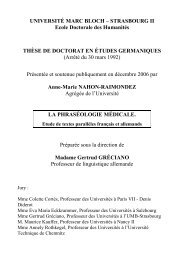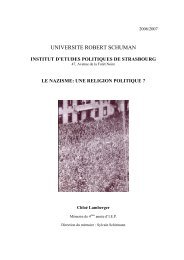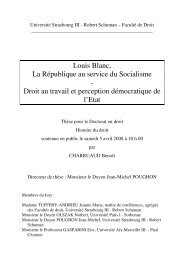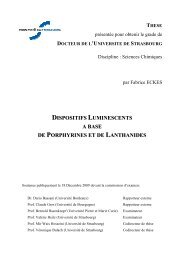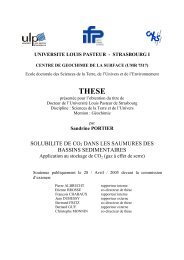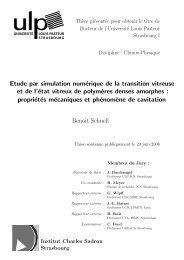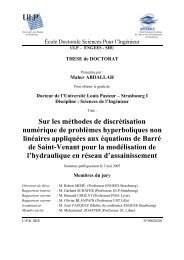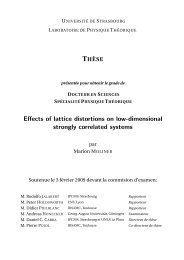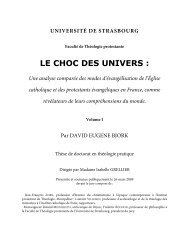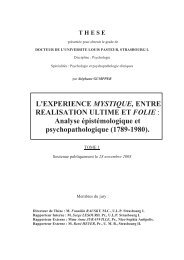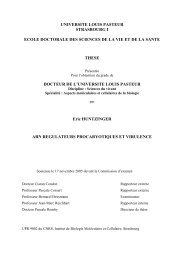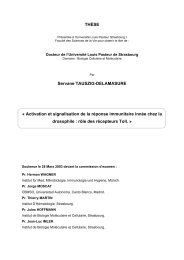Économie Évolutionniste et Culture d'Entreprise
Économie Évolutionniste et Culture d'Entreprise
Économie Évolutionniste et Culture d'Entreprise
Create successful ePaper yourself
Turn your PDF publications into a flip-book with our unique Google optimized e-Paper software.
Consider the foreman of a work team responsible for a particular operation (s<strong>et</strong> of routines) who observes that a machine is not<br />
working properly. He routinely calls the maintenance department, which in turn routinely sends out a machine repairman. The<br />
machine repairman has been trained to diagnose in a particular way the troubles that such a machine might have. He goes<br />
down a list of possible problems systematically, and finds one that fits the symptoms. He fixes the part so that the machine<br />
again plays its role in the overall work routine. He may also, however, report to the foreman that this particular kind of trouble<br />
has become very common since the supplier started using aluminium in making the part in question and that perhaps the<br />
machine should be operated in a different manner to avoid the difficulty. (Nelson <strong>et</strong> Winter, 1982, p. 129).<br />
Nous allons traiter dans ce chapitre principalement des dimensions du modèle de Nelson <strong>et</strong> Winter (1982)<br />
<strong>et</strong> des théorisations qui lui ont succédé qui ont trait à l’organisation de la firme. C’est d’ailleurs une<br />
dimension saillante dans les conceptualisations néo-Schump<strong>et</strong>eriennes. Les routines organisationnelles<br />
occupent dans l’approche théorique de Nelson <strong>et</strong> Winter de l’innovation une place privilégiée pour en<br />
constituer véritablement le cœur analytique (§2.2.1). Quant à la figure de l’entrepreneur, centrale chez<br />
Schump<strong>et</strong>er, elle sera (presque complètement) passée sous silence chez Nelson <strong>et</strong> Winter (§2.2.2). Et bien<br />
que leurs objectifs théoriques étaient de rendre compte du changement économique dans sa plénitude<br />
(microéconomique comme macroéconomique), c’est particulièrement la théorie de la firme qui a reçu le<br />
plus d’attention à leurs yeux (§2.2.3).<br />
2.2.1 Le rôle (clé) des routines<br />
La firme, chez Nelson <strong>et</strong> Winter, possède des éléments de permanence qui se traduisent par une inertie<br />
relative de son comportement : ses “routines organisationnelles”, qui sont l’expression comportementale<br />
de ses ressources idiosyncrasiques. L’apport de Nelson <strong>et</strong> Winter (1982) a permis à la théorie<br />
évolutionniste de la firme de se focaliser sur le rôle central des “routines organisationnelles” dans le<br />
comportement des firmes. Nelson <strong>et</strong> Winter les définissent de la manière suivante :<br />
We use “routine” in a highly flexible way, much as a “program” (…) is used in discussion of computer programming. It may<br />
refer to a rep<strong>et</strong>itive pattern of activity in an entire organisation, to an individual skill, or, as an adjective, to the smooth<br />
uneventful effectiveness of such an organisational or individual performance. (Nelson <strong>et</strong> Winter, 1982, p. 97).<br />
Nous avons vu dans le chapitre précédent que la conceptualisation de Nelson <strong>et</strong> Winter résultait de<br />
sources hétérogènes, dont celles de Simon <strong>et</strong> des béhavioristes. En définissant les routines comme des<br />
programmes d’actions séquentielles, Nelson <strong>et</strong> Winter se réfèrent directement à la conception Simonienne<br />
de la cognition considérée comme un traitement de l’information. Mais alors que Simon, dans une<br />
démarche cognitiviste, insiste sur la nature réflexive de l’action individuelle 18 , Nelson <strong>et</strong> Winter passent<br />
sous silence la nature des processus mentaux sous-jacents à l’action individuelle. En se référant à Polanyi,<br />
ils vont s’éloigner de la perspective cognitiviste de Simon :<br />
[T]he aim of a skillful performance is achieved by the observance of a s<strong>et</strong> of rules which are not known as such to the person<br />
following them. (Polanyi, 1962, p. 49 ; cité par Nelson <strong>et</strong> Winter 1982, p. 77).



